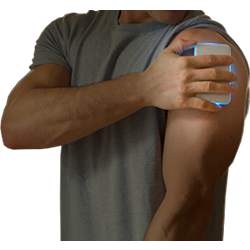
Over the last few decades, the advancement of medical technology has been nothing less than breathtaking. Machines large and small have revolutionized the way medical professionals monitor and treat patients. Thanks to leaps in digital technology, another quiet revolution is taking place; a spate of compact and connected health, fitness, and medical devices—including wearables—is flooding the consumer marketplace.
These systems—ranging from blood pressure cuffs and glucose meters to muscle-quality monitors, gait analyzers, and digital pill boxes—are transforming the way consumers and patients approach healthcare, and the way healthcare providers monitor and treat patients. "It's creating opportunities for people to be healthier, but it's also redefining relationships with healthcare providers," says Allyson Hein, a senior consultant at Clarkston Consulting, a firm that provides consulting services for life sciences and consumer products companies.
However, the opportunities also create challenges. As these devices become more powerful and land in the hands, arms, and bodies of consumers, there are questions about whether they will be used correctly and, in some cases, whether they will address the underlying problem. In addition, there are regulatory issues to manage, legal issues to tackle, and privacy issues to address. Says Ruth Thomson, head of consumer development for Cambridge Consultants, a U.K. product development and technology innovation company, "The technology is moving fast. In some cases, the business and regulatory framework is having trouble keeping up."
One Step Beyond
Not long ago, blood pressure cuffs were mostly relegated to doctors' offices, and blood glucose meters and other devices were cumbersome and difficult to use. Thanks to a convergence of digital technologies—smaller and more powerful processors, cloud computing, mobile devices, wireless connectivity—medical and health-related devices are becoming smarter and more compact. "The appeal for medical professionals and consumers is the ability to monitor and treat conditions more effectively," says Carol Lucarelli, director of marketing and product development at medical device manufacturer Omron Healthcare.
For example, Omron recently announced an ultra-compact wrist-worn device that measures blood pressure with clinical accuracy, and also tracks other heart health data such as sleep patterns. The device, which has the appearance of a wristwatch, syncs data with a mobile app and allows users to share data with their healthcare providers. An upper-arm monitor—which requires no tabletop unit, no tubes, and no wires—uses Bluetooth to transmit blood pressure data, as well as Body Mass Index (BMI).
An array of other high-tech devices is also streaming into the marketplace. Among them:
- electronic pill boxes and apps that ensure a user on medication is taking the correct dosage;
- Bluetooth-enabled insoles that use vibrations and voice commands to guide the blind;
- insulin injectors that keep track of each injection and dose, and transmit the data to a smartphone app; and
- electronic scanners that measure overall body fat and deliver in-depth muscle analysis.
Says Omron’s Lucarelli, "A huge driver is the widespread adoption of smartphones. There is a platform for storing and managing data–and carrying it with you to the next phone."
Critical Care
Whether these devices make people healthier in the long run remains to be seen. What is more, there are concerns about how consumers use some of these products, which may apply gamification and gimmickry to serious issues.
"There's a blurry line between sports and fitness technology and medical technology," Thomson says. "There are devices consumers can buy over the counter that are regulated by the FDA and there are devices available from doctors that require a prescription." Already, a few companies have been forced to pull products from the market under orders of regulatory bodies, including the Food and Drug Administration (FDA) in the U.S. (which issued its final guidance for regulation of fitness and wellness technologies last August).
The FDA began to formulate standards for apps in February 2015. However, in some cases, there may be confusion among consumers about what a device is and what it does. "Fitness devices are not the same as medical devices, and consumers may or may not be able to differentiate the two," Thomson says.
[With some exceptions, a fitness device is typically available at retailers and unregulated by the FDA (or a similar body in another country). Medical devices are usually sold at specialty sites, stores, or through healthcare providers. Strictly speaking, a medical device would have to be approved by the FDA.]
Interface and app designers must think carefully about how to present information—and what to present—to different groups. "Consumers and doctors require very different data," she notes.
Hein notes that security and privacy concerns are also paramount. "There must be a focus on big data and how it is used. There's the potential for misuse as well as redlining."
Nevertheless, the field is advancing, and the ability to automate measurements, manage doses, and introduce next-generation capabilities—including devices that work inside the body—will almost certainly prove revolutionary. Says Hein: "There are huge opportunities to make the impossible possible–and create greater value for medical professionals and consumers."
Samuel Greengard is an author and journalist based in West Linn, OR.



Join the Discussion (0)
Become a Member or Sign In to Post a Comment